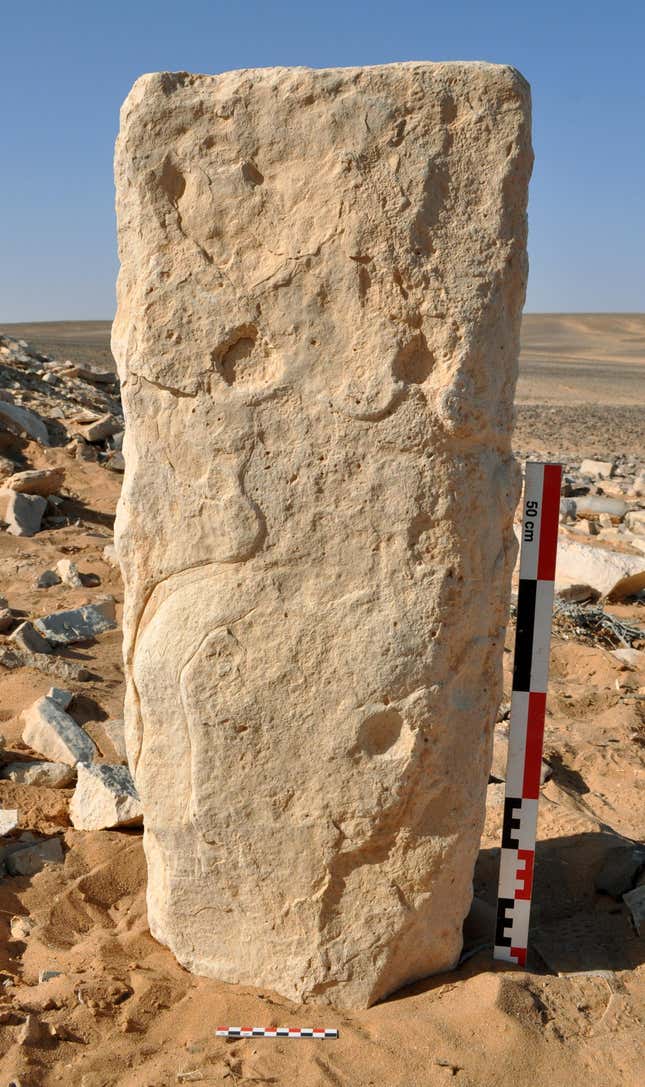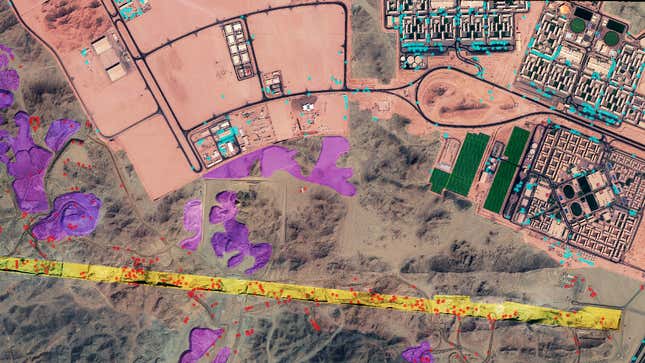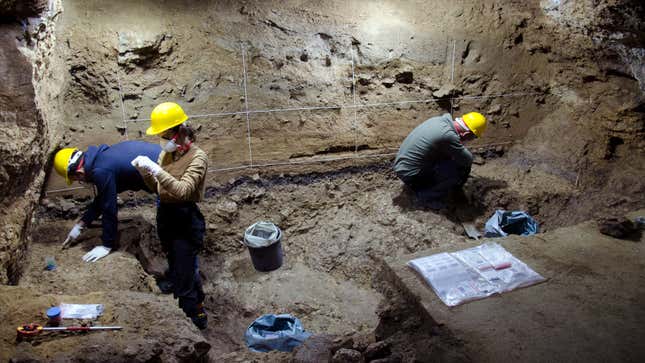
Three needs are famously fundamental to survival: food, water, and shelter. According to new research, ancient humans had at least two of those three needs met by a nearly mile-long lava tube about 77 miles (125 kilometers) north of Medina, Saudi Arabia, for at least 7,000 years.
The lava tube in question is named Umm Jirsan, the longest of the lava tubes in Saudi Arabia’s volcanic field, Harrat Khaybar. Today, wolves, foxes, and snakes inhabit the cave, but it was once a popular spot for human pastoralists and their domesticated animals. The new study, published today in the journal PLoS One, examined faunal remains and rock art in the region and adds to a growing body of research into the system.
“The findings at Umm Jirsan provide a new type of archaeological site in the region, and one where organic material like bone and deeply layered sediments are much better preserved,” said Mathew Stewart, a zooarchaeologist at Griffith University in Australia and the study’s lead author, in an email to Gizmodo. “We had no expectations to find archaeology at Umm Jirsan. In fact, we were mostly interested in seeing the large caches of bones that had been previously reported.”
Indeed, a team that included Stewart found evidence in 2021 that striped hyenas were creating bone caches in the back of the cave. There are hundreds of thousands of bones in Umm Jirsan, the team found, belonging to at least 40 species and dating from the Neolithic to as recently as the Victorian Era.
Though the oldest dated faunal remains in the cave are about 7,000 years old, Stewart told Gizmodo that animals have likely used the lava tubes since they formed, millions of years ago. Seven of the lava flows in Harrat Khaybar are less than 1,500 years old, according to the Smithsonian Institution’s Global Volcanism Program, and the region still has the potential for activity, according to a 2022 study.

In their new paper, the researchers reported evidence for human occupation of the lava tube between the Neolithic and the Bronze Age—in other words, humans made use of the tube for millennia. Isotopic analysis of the human remains in the cave revealed an increase of foods in their diet that had high levels of a certain isotope of carbon associated with oasis agriculture.
But the team concluded that Umm Jirsan was probably not permanently occupied. Rather, they think it was a convenient spot for herders to stop and provide their flocks with shade and water. Based on human use of the surrounding area—evinced by nearby rock art and other faunal records—the team posited that the lava tube “was situated along a pastoral route linking key oases.” So you can think of Umm Jirsan more as an ancient truck stop than a place of residence.
The rock art described by the team was found at a nearby collapsed lava tube northeast of Umm Jirsan. The researchers reported 16 rock art panels depicting cattle, sheep, goats, and possibly ibexes.
Even though humans didn’t have a permanent presence in the lava tube, the natural structure provided shelter for people and their herds for thousands of years. In the harsh desert environment, the promise of a break from the sun, wind, and heat would’ve made Umm Jirsan a perfect prehistoric pit stop.
More: Hyenas Left a Massive Pile of Bones in a Saudi Arabian Lava Tube















